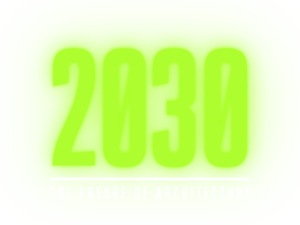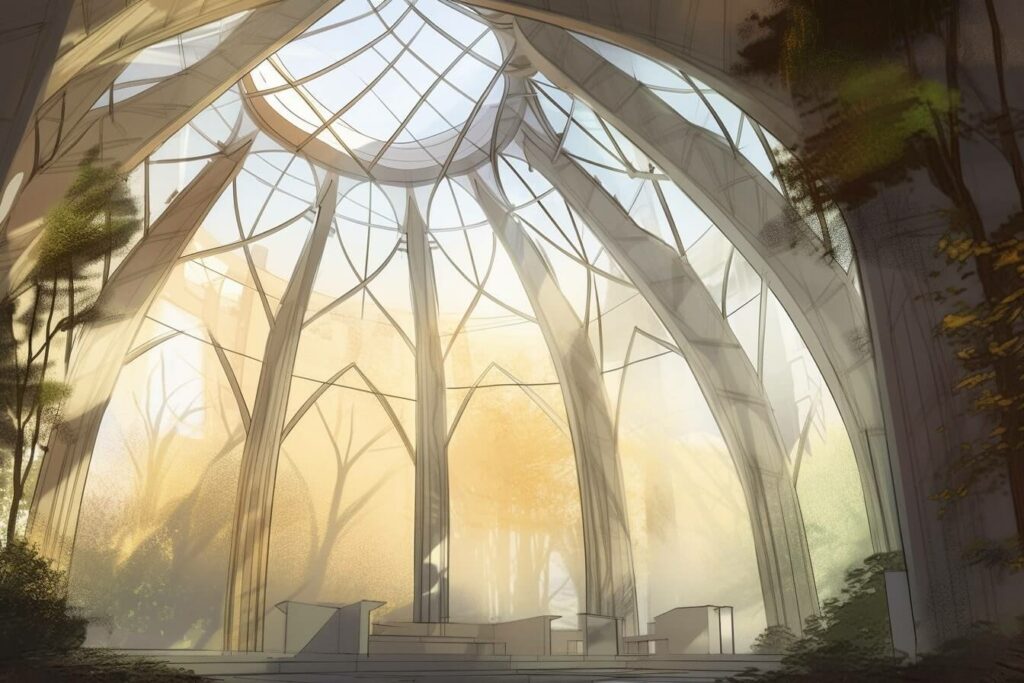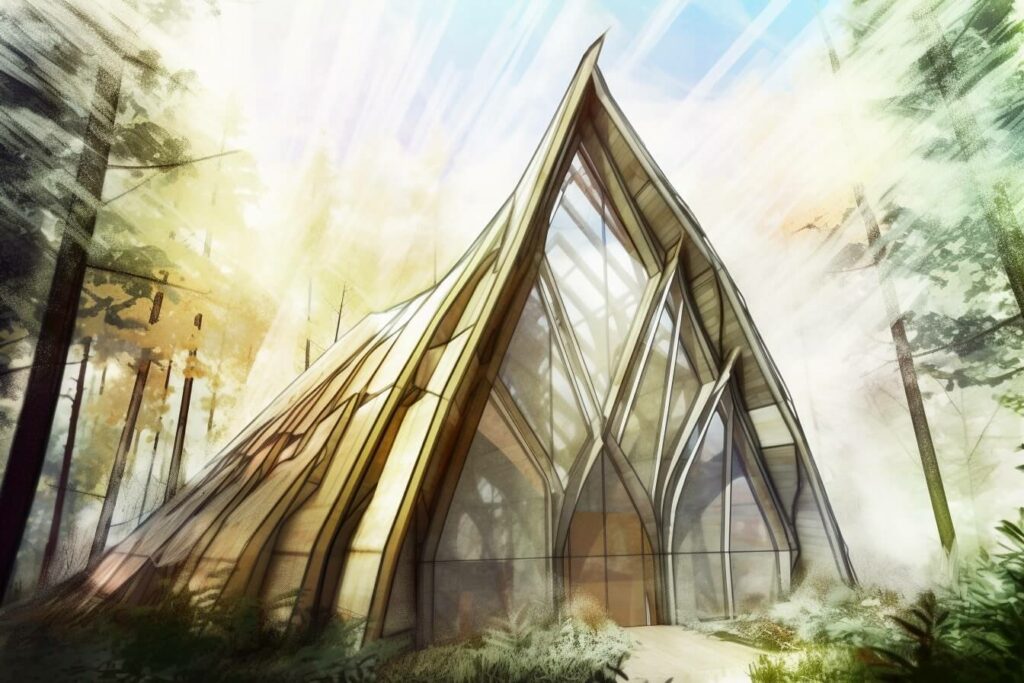
A FREE COURSE TO THE FOREFRONT OF ARCHITECTURE INNOVATION
A FUSION OF SUSTAINABLE DESIGN, HIGH-PERFORMANCE BUILDINGS, AND ARTIFICIAL INTELLIGENCE
JULY 8TH TO 12TH, 2024
ONLINE AND FREE EVENT
JULY 8TH TO 12TH, 2024
ONLINE AND FREE EVENT
By clicking the button, you agree to our Terms of Use and Privacy Policy, including the use of cookies and the sending of communications.
For architects, interior designers, and construction companies, staying ahead of the market is a continuous challenge. Keeping up with new technologies and design trends can be time-consuming and overwhelming, but the good news is that a new tool is making waves in the industry, and it’s called Generative Design.
Parametric design is an innovative technology that uses algorithms and computer programs to generate and optimize design options for specific criteria. It is an AI-powered tool that can help professionals save time, reduce waste, and find new and creative solutions for their projects.
In this article, we will dive into the world of Generative Design and answer the most frequently asked questions about this exciting new technology. We will explore how it is changing the architecture and construction industry and how you can use it to put yourself ahead of the market.
What is Generative Design?
Parametric design is a process where a computer program generates multiple design options based on specified parameters and constraints. The program then evaluates each option based on specific criteria, such as cost, energy efficiency, or material usage, and optimizes the design accordingly.
The result is a set of optimized design options that can be used as a starting point for further development or as a final solution.





A FREE COURSE TO THE FOREFRONT OF ARCHITECTURE INNOVATION
A FUSION OF SUSTAINABLE DESIGN, HIGH-PERFORMANCE BUILDINGS, AND ARTIFICIAL INTELLIGENCE
JULY 8TH TO 12TH, 2024
ONLINE AND FREE EVENT
JULY 8TH TO 12TH, 2024
ONLINE AND FREE EVENT
By clicking the button, you agree to our Terms of Use and Privacy Policy, including the use of cookies and the sending of communications.
How does Generative Design work?
Generative Design uses algorithms and computer programs to create multiple design options. The program takes inputs from the user, such as design criteria, constraints, and parameters, and generates multiple design options based on these inputs. The program then evaluates each option based on specific criteria and optimizes the design accordingly.
The program uses complex mathematical algorithms to generate and evaluate each design option, considering cost, material usage, energy efficiency, and structural integrity. The result is a set of optimized design options that can be used as a starting point for further development or as a final solution.


Why is Generative Design important?
Generative Design is important because it can help professionals save time and resources, reduce waste, and find new and creative solutions for their projects. Parametric design can help professionals quickly identify the best solution for their projects by using algorithms and computer programs to generate and evaluate design options.
In addition, Parametric design can help professionals find new and innovative solutions that they may not have considered otherwise. The program’s ability to evaluate and optimize design options based on specific criteria can lead to new and creative solutions that are functional but also sustainable and cost-effective.
What are the benefits of using Generative Design?
There are several benefits of using Generative Design, including:
- Time-saving: Parametric design can help professionals save time by generating multiple design options in a fraction of the time it would take to create each option manually.
- Reducing waste: Parametric design can help reduce waste by optimizing design options based on specific criteria, such as material usage and energy efficiency.
- Cost-effective: Parametric design can help professionals find cost-effective solutions by evaluating design options based on criteria such as cost and material usage.
- Innovative solutions: Generative Design can help professionals find new and innovative solutions by evaluating design options based on criteria such as energy efficiency and structural integrity.





A FREE COURSE TO THE FOREFRONT OF ARCHITECTURE INNOVATION
A FUSION OF SUSTAINABLE DESIGN, HIGH-PERFORMANCE BUILDINGS, AND ARTIFICIAL INTELLIGENCE
JULY 8TH TO 12TH, 2024
ONLINE AND FREE EVENT
JULY 8TH TO 12TH, 2024
ONLINE AND FREE EVENT
By clicking the button, you agree to our Terms of Use and Privacy Policy, including the use of cookies and the sending of communications.
How can professionals use Generative Design?
Professionals can use Generative Design in several ways, including:
- Conceptual design: Parametric design can be used during the conceptual design phase to generate and evaluate multiple design options based on specific criteria.
- Optimization: Parametric design can optimize existing designs, making them more sustainable and cost-effective.
- Material selection: Parametric design can help professionals make informed decisions about material selection by evaluating design options based on material usage and cost criteria.
- Structural analysis: Parametric design can be used to analyze and optimize the structural integrity of a design, ensuring that it is safe and secure.
- Building simulation: Parametric design can be used to simulate and analyze the energy efficiency of a building, helping professionals make informed decisions about its design and construction.
Examples of Generative Design Projects Around the Globe
Generative Design has been used in various projects worldwide, from concept cars to architectural structures. Here are a few examples of Parametric design projects that have made a significant impact in the architecture and construction industry:
- The Serpentine Pavilion in London, UK: Designed by architect Frida Escobedo, this pavilion used Generative Design to optimize its design for energy efficiency and structural integrity. The result was a unique and innovative design that was functional and sustainable.
- The Mercedes-Benz Concept Car in Stuttgart, Germany: Mercedes-Benz used a Parametric design to develop a new concept car that was lighter, more aerodynamic, and more energy-efficient than traditional cars. The result was a vehicle that was both environmentally friendly and visually stunning.
- The Audi Quattro Concept in Ingolstadt, Germany: Audi used Parametric design to develop a new concept car that was more aerodynamic and more energy-efficient than traditional cars. The result was a vehicle that was both environmentally friendly and visually stunning.
- The Zaha Hadid Architects’ Mathematics Gallery in London, UK: Zaha Hadid Architects used Generative Design to create a unique and innovative design for the Mathematics Gallery, optimized for energy efficiency and structural integrity. The result was a building that was both functional and visually stunning.
- The BMW iNEXT Concept Car in Munich, Germany: BMW used Parametric design to develop a new car that was more aerodynamic, energy-efficient, and sustainable than traditional cars. The result was a vehicle that was both environmentally friendly and visually stunning.
These examples demonstrate the power and versatility of Parametric design and its impact on the architecture and construction industry. By using Generative Design, professionals can create innovative and sustainable solutions that are functional and visually stunning.


What are the challenges of using Generative Design?
While Generative Design offers many benefits, there are also some challenges that professionals need to be aware of, including:
- Technical knowledge: Using Parametric design requires specific technical knowledge, including understanding algorithms and computer programs.
- Integration with other tools: Parametric design needs to be integrated with other design tools, such as 3D modeling software, to be effective.
- Data accuracy: Parametric design relies on accurate data to generate and evaluate design options. If the data is incorrect, the analysis results will also be incorrect.
- Bias: Parametric design relies on algorithms and computer programs to generate and evaluate design options. There is a risk that these algorithms may be biased, leading to suboptimal results.
Generative Design Software for Architects
As Generative Design becomes more popular in the architecture and construction industry, many software options are available for architects. Some popular Parametric design software options include:
- Autodesk Dreamcatcher: This software is designed for architects and provides various tools for generating and optimizing designs.
- Grasshopper: This popular plugin for Rhino 3D, a popular 3D modeling software, provides architects with a range of Generative Design tools.
- Dynamo: This open-source software platform for Generative Design provides architects with various tools for generating and optimizing designs.
- GenerativeComponents: This Parametric design software developed by Bentley Systems provides architects with various tools for generating and optimizing designs.
- Genero: This cloud-based Generative Design software provides architects various tools for generating and optimizing designs.
These are just a few examples of the many Parametric design software options for architects. By using these tools, architects can take advantage of the many benefits of Generative Design and stay ahead of the market in their industry.
Generative Design and Sustainable Design: A Match Made in Heaven
Generative Design and sustainable design go hand in hand, aiming to create innovative and sustainable solutions in the architecture and construction industry. Parametric Design uses algorithms and computer programs to generate and evaluate design options, while sustainable design focuses on creating environmentally friendly and energy-efficient solutions.
Using Parametric Design, architects and designers can consider a range of sustainability criteria when generating and evaluating design options. For example, they can evaluate the energy efficiency of a design, the materials used, and the overall environmental impact of the design. This allows them to create designs that are not only innovative but also sustainable.
In addition, Parametric Design can help architects and designers to optimize their designs for sustainability. For example, it can be used to optimize the design for energy efficiency, reducing the amount of energy required to heat or cool a building. It can also be used to optimize the design for structural integrity, ensuring that the building is safe and secure.
In conclusion, Generative Design and sustainable design are a perfect match, as they aim to create innovative and sustainable solutions in the architecture and construction industry. By combining the power of Parametric Design with the principles of sustainable design, architects and designers can create solutions that are not only innovative but also environmentally friendly and energy-efficient.
Generative Design: A Conclusion
Generative Design is a powerful tool that can help architects, interior designers, and construction companies stay ahead of the market. It offers many benefits, including time-saving, reduced waste, cost-effectiveness, and innovative solutions.
However, it also presents some challenges, including technical knowledge, integration with other tools, data accuracy, and the risk of bias.
Suppose you’re interested in learning more about Generative Design and how it can help you stay ahead of the market. In that case, we invite you to discover UGREEN Sustainability Consultancy Services or UGREEN Skills, our sustainability educational platform for professionals and companies.
Our team of experts is here to help you navigate the exciting world of Generative Design and put you on the path to success.





A FREE COURSE TO THE FOREFRONT OF ARCHITECTURE INNOVATION
A FUSION OF SUSTAINABLE DESIGN, HIGH-PERFORMANCE BUILDINGS, AND ARTIFICIAL INTELLIGENCE
JULY 8TH TO 12TH, 2024
ONLINE AND FREE EVENT
JULY 8TH TO 12TH, 2024
ONLINE AND FREE EVENT
By clicking the button, you agree to our Terms of Use and Privacy Policy, including the use of cookies and the sending of communications.
If you need our services in the Portuguese language, click here.
